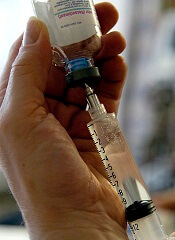User login

The European Medicines Agency (EMA) has started a review of medicines containing factor VIII (FVIII) to assess the risk of inhibitor development among patients starting treatment for hemophilia A.
The agency is conducting this review because results of the SIPPET study suggested that patients are more likely to develop inhibitors if they receive FVIII products made by DNA recombinant technology rather than FVIII products derived from blood.
The EMA is evaluating data from the SIPPET study as well as all other relevant data on blood-derived and recombinant FVIII products.
The agency said it will consider the implications of these data for previously untreated patients with hemophilia A and whether there is a need for risk minimization measures or other changes to the marketing authorizations of these products.
The review will cover all medicines containing FVIII that are authorized for use within the European Union. For details on the products to be reviewed, including the different product names used in each country, visit the EMA website (Factor VIII Article-31 referral - Annex I).
The EMA’s review has been initiated at the request of the Paul-Ehrlich-Institute, under Article 31 of Directive 2001/83/EC.
The review is being carried out by the EMA’s Pharmacovigilance Risk Assessment Committee, the committee responsible for the evaluation of safety issues for human medicines, which will make a set of recommendations.
Those recommendations will then be sent to the Committee for Medicinal Products for Human Use, which is responsible for questions concerning medicines for human use and will adopt the EMA’s opinion.
Finally, the European Commission will adopt a legally binding decision applicable in all member states of the European Union. ![]()

The European Medicines Agency (EMA) has started a review of medicines containing factor VIII (FVIII) to assess the risk of inhibitor development among patients starting treatment for hemophilia A.
The agency is conducting this review because results of the SIPPET study suggested that patients are more likely to develop inhibitors if they receive FVIII products made by DNA recombinant technology rather than FVIII products derived from blood.
The EMA is evaluating data from the SIPPET study as well as all other relevant data on blood-derived and recombinant FVIII products.
The agency said it will consider the implications of these data for previously untreated patients with hemophilia A and whether there is a need for risk minimization measures or other changes to the marketing authorizations of these products.
The review will cover all medicines containing FVIII that are authorized for use within the European Union. For details on the products to be reviewed, including the different product names used in each country, visit the EMA website (Factor VIII Article-31 referral - Annex I).
The EMA’s review has been initiated at the request of the Paul-Ehrlich-Institute, under Article 31 of Directive 2001/83/EC.
The review is being carried out by the EMA’s Pharmacovigilance Risk Assessment Committee, the committee responsible for the evaluation of safety issues for human medicines, which will make a set of recommendations.
Those recommendations will then be sent to the Committee for Medicinal Products for Human Use, which is responsible for questions concerning medicines for human use and will adopt the EMA’s opinion.
Finally, the European Commission will adopt a legally binding decision applicable in all member states of the European Union. ![]()

The European Medicines Agency (EMA) has started a review of medicines containing factor VIII (FVIII) to assess the risk of inhibitor development among patients starting treatment for hemophilia A.
The agency is conducting this review because results of the SIPPET study suggested that patients are more likely to develop inhibitors if they receive FVIII products made by DNA recombinant technology rather than FVIII products derived from blood.
The EMA is evaluating data from the SIPPET study as well as all other relevant data on blood-derived and recombinant FVIII products.
The agency said it will consider the implications of these data for previously untreated patients with hemophilia A and whether there is a need for risk minimization measures or other changes to the marketing authorizations of these products.
The review will cover all medicines containing FVIII that are authorized for use within the European Union. For details on the products to be reviewed, including the different product names used in each country, visit the EMA website (Factor VIII Article-31 referral - Annex I).
The EMA’s review has been initiated at the request of the Paul-Ehrlich-Institute, under Article 31 of Directive 2001/83/EC.
The review is being carried out by the EMA’s Pharmacovigilance Risk Assessment Committee, the committee responsible for the evaluation of safety issues for human medicines, which will make a set of recommendations.
Those recommendations will then be sent to the Committee for Medicinal Products for Human Use, which is responsible for questions concerning medicines for human use and will adopt the EMA’s opinion.
Finally, the European Commission will adopt a legally binding decision applicable in all member states of the European Union. ![]()